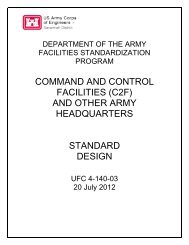1923%20Memoir%20on%20Maps%20of%20Chinese%20Turkistan%20by%20Stein%20s
1923%20Memoir%20on%20Maps%20of%20Chinese%20Turkistan%20by%20Stein%20s
1923%20Memoir%20on%20Maps%20of%20Chinese%20Turkistan%20by%20Stein%20s
You also want an ePaper? Increase the reach of your titles
YUMPU automatically turns print PDFs into web optimized ePapers that Google loves.
60 THIS MAPS [Chap. Ill<br />
need of special explanat,ion. Othors which had to be specially introduced for tile marking<br />
of ancient sites, ruins and other objects of antiquarian interest, are sufficiently explained in the<br />
fsble of symbols reproduced at the foot of each slieet.<br />
No exact cl~ronologicnl limits can be iixetl for tho 'at~tiquity' wl~ich the use of red<br />
colour indicates ill the case of these symbols; but generally it may be<br />
Ancient ren'nlns<br />
rhowrl<br />
cor~sidered as tielining those objects wl~ich have ceased for a considerable<br />
IU red.<br />
time past. to serve their original purpose.<br />
In the case of sjinbols for inllabited sites, no attempt at systematic differentiation<br />
according to imllortance could be tnade. Large to\\.~~s, ho\ve\er, l~ave<br />
S~mbo's for been distinguisl~ed by black outlines ap~xoxi~nately correspondillg to<br />
sites.<br />
tlie extent of gronntl tiley cover, and among other sett,len~cnts the more<br />
popll~ous are made recopizable by sliglitly enlarged solid blocks. The market-towns of<br />
tracts in the T;irin~ basin are easily recognized by tl~e addition of -6ci:cir (often coupled<br />
,\.itll a nreek-da~) to the name of tile tract. 1x1 li:\n-su nshere practically all villages and<br />
hamlets are walled, the use of the fort sjr~lbol has been restricted to small towns to avoid<br />
over-crowding. Throughont the Inaps a sm,..ll 01le11 square has been used to distinguish<br />
temporarily occupled structures sue11 as roadside stations (luilgur), sl~epl~crds' huts (Cllril), and<br />
the like, fro111 1)ermanent I~abitations.<br />
As iu the l/Million sheets of the Survey of India, no distiuction has been made<br />
between din'erent classes of roads, except that the few nmain lines of<br />
l~epreseutation Of traitic connecting the princil~al oases and usually ~~~arlced by the CI1inese<br />
'roads'.<br />
administration \villi 'mile-stones', rccte IIIU~ to\vers, at dirtatmccs of I() li<br />
(app~Osimat~lj 2 miles) have been S~IV\\U wit11 double lines in red. 'I'lmrouglmout tile regions<br />
represented, 'roads' are only natural t ~~cl;~, practieallle for camels every\\-here in tlle I~lains<br />
for carts also, except wl~ere the strctellos of drift-sand to be crossctl are extensive, as is<br />
the case all the way between 611otan and 'I'un-huang.<br />
In regions ml~ere desert areas vastly predominate, some tlitticulty is naturally espeyienced<br />
as to wl~ich traclis can reasonably be marlied as 'loads and<br />
Indicntion of tracks. 'l'racks such as those which traverse the western Ii ~rul;-tagI~ or lead<br />
along the foot of the easternmost K'un-lun, tlmouglr \vcll-l;uo\\~n to more<br />
people in tl~e nearest snmall settlements, may remain unubed for mally molltlrs, or<br />
even years. The principle 1 have endeavoured to observe was to mark wit;) the red line of<br />
'road or path' only those tracks wliicll an ex11erienced traveller in l~ossession of the map nligllt<br />
u;ith dlle core be able to i'ollo\v unguided. It goes without &a)-ing tllat of hucll tlar.]






